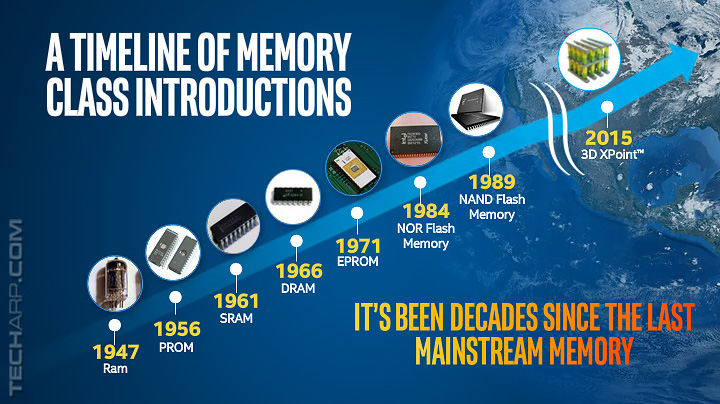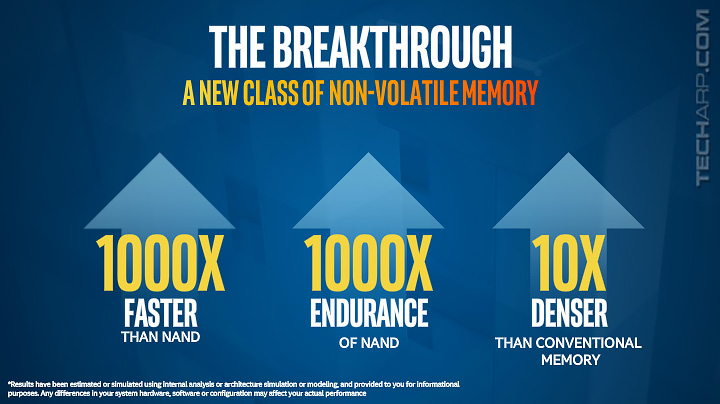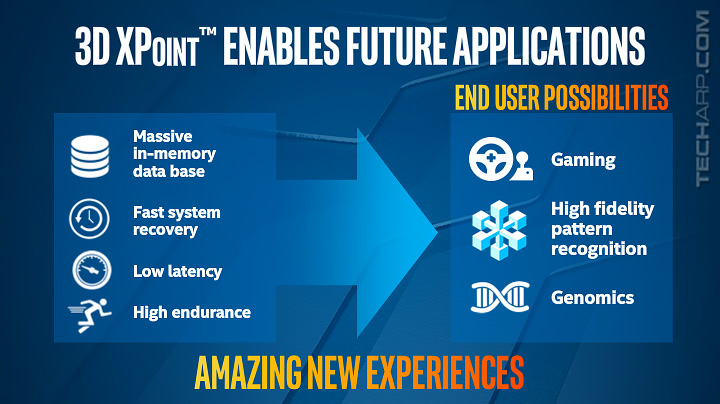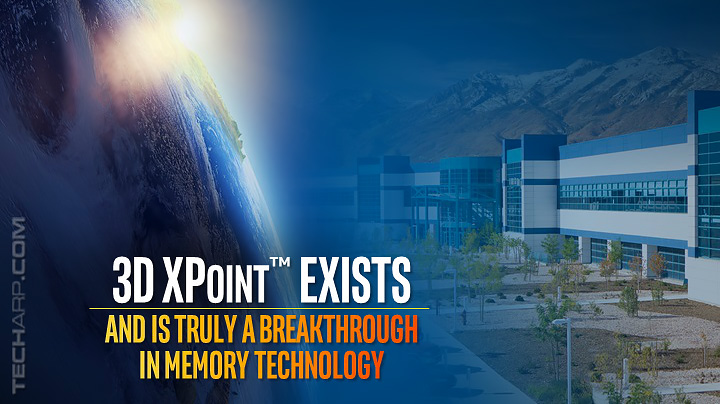Revolutionary, Not Evolutionary
While there has been much stride in improving computer memory technology, it is instructive to note that the last class of memory technology created was the NAND flash memory in 1989. 3D XPoint memory would represent the first new class of computer memory technology to be developed since then, ending a "drought" that spanned more than a quarter of a century.
If you looked at how NAND flash memory technology has transformed our world, you can only imagine what 3D XPoint memory can do. It combines the performance of SDRAM memory and the storage density of NAND flash memory with unparalleled endurance. Best of all - it is non-volatile memory.
As 3D XPoint is still being fine-tuned, Intel and Micron can only give us rough ballpark figures. Generally, 3D XPoint memory will be up to 1,000 times faster with up to 1,000 times greater endurance than NAND flash memory. On top of that, it is 10 times denser than DRAM memory.
They declined to qualify what kind of NAND memory technology (SLC / MLC / TLC / 3D) that they were comparing the 3D XPoint against. But assuming a worst case comparison using the 1,000 P/E cycles of low-end TLC NAND, the 3D XPoint memory should be capable of supporting at least 1 million P/E cycles. REVOLUTIONARY.
Intel Compute Stick - A computer in the palm of your hands
| If you like this article, please share it! -> |
How Does 3D XPoint Accomplish That?
Superficially, 3D XPoint looks like 3D NAND, which is basically planar NAND stacked in layers to increase storage density. However, 3D XPoint is structurally different.
It has a cross point structure, giving rise to the name XPoint. It is this cross point structure that allows it to read from and write to individual cells, instead of entire blocks like in NAND flash memory. It is also stacked in layers like 3D NAND for greater storage density, which is why it's called 3D XPoint.
In addition to its unique crosspoint structure, it also uses new bulk material change technology in its memory cells. This allows it to switch states up to 1,000 faster than NAND flash memory. Micron states that 3D XPoint is not phase change memory, but should be classified as bulk resistive memory technology.
3D XPoint's unique capabilities would allow a wide variety of applications, not just replacing the ubiquitous NAND flash memory. It would allow the possibility of a unified computer memory + storage system, thanks to its high speed and non-volatile nature. The possibilities for such a memory technology is limited only by our imagination. Look at how many innovations NAND flash memory has enabled.
Commercial development of 3D XPoint is now being handled by IM Flash (the Intel-Micron joint venture) in Lehi, Utah. Currently, they are working to fabricate 3D XPoint chips with a storage capacity of 128 Gbits using a 20 nm process technology. IM Flash expects to start sampling at the end of 2015, with availability in 2016.
| If you like this article, please share it! -> |
Support Tech ARP!
If you like our work, you can help support out work by visiting our sponsors, participate in the Tech ARP Forums, or even donate to our fund. Any help you can render is greatly appreciated!
Page |
The Intel-Micron 3D XPoint Technology Report |
1 |
|
2 |
|
3 |
Support us by buying from Amazon.com! |
|
| Grab a FREE 30-day trial of Amazon Prime for free shipping, instant access to 40,000 movies and TV episodes and the Kindle Owners' Lending Library! | |
<<< 3D XPoint Introduction, A Collaborative Effort : Previous Page | Next Page : Press Release, Key Points & Infographics >>>







 Add to Reddit
Add to Reddit






